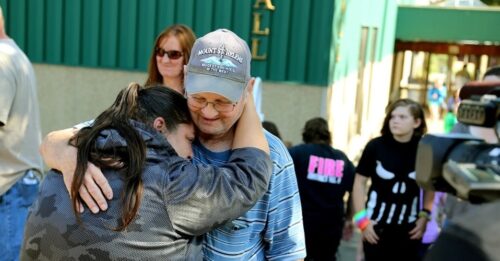
12.5.23 – Government Technology – Jim McKay
“The school district doesn’t want law enforcement sitting around watching kids in the school during the day and law enforcement doesn’t want to sit around and watch kids during the school day either.”
The list of school shootings continues to grow, as does the realization that if a bad actor is intent on killing without regard for the consequences, stopping them is a challenge for which there is no silver bullet.
But there are safety measures that can help, depending on whether the threat is an inside job or someone from the outside trying to enter a facility to do damage.
Having a school resource officer on campus is a strategy that has received mixed reviews; tip lines and behavioral threat assessment and prevention within schools are highly effective, as are relationships with local law enforcement, especially when law enforcement has access to floor plans. Mapping of the schools and even surveillance cameras can help.
When an active shooter is already inside a facility such as a school, the damage that can occur happens in minutes, and every advantage that law enforcement can gain may save a life. Having knowledge of where to go immediately upon arriving on the scene can help. That’s where mapping of the grounds is helpful to police, and when maps are shared, a dispatcher can tell the officers where the threat is and which is the best location to gain entry.
“If they can see a floorplan before they go in and the dispatcher can explain the layout of the school, depending on the technology available locally, even integration with video surveillance, to give the dispatcher a visual of what’s going on,” it can help, said Brad Spicer, national director of safety and emergency management at Navigate360.
Spicer said it’s usually school district-based law enforcement that have that kind of capability because schools and school districts are often hesitant to provide access to law enforcement.
“A lot of times that is just a lack of coordination and collaboration between those two entities,” Spicer said. “The school district doesn’t want law enforcement sitting around watching kids in the school during the day, and law enforcement doesn’t want to sit around and watch kids during the school day either.”
Schools weren’t built to keep people out, and usually if someone wants to get in to do harm they will find a way. That’s when the mapping, surveillance and training come into play.
If a shooter is already inside, it’s helpful if the staff have undergone some training, such as ALICE (Alert, Lockdown, Inform, Counter, Evacuate), that informs on ways to mitigate a threat.
Once an active shooter has entered a school, it’s difficult to keep them from doing damage. For one, it’s hard to keep them out of a classroom for any length of time, and even if people can there are often windows for a shooter to shoot through.
“We can’t put all of our faith in locked doors,” Spicer said. “We train people to reinforce lockdowns to make that locked door harder to breach, but it’s really difficult to keep a bad person out.”
It’s much easier to thwart an attack that originates from inside the school grounds through intelligence and behavioral assessments. Tip lines are very effective, and school resource officers often gain the confidence of students who share information.
“Those tips come in or someone presents a concern and then a threat assessment is done, and a case management [system] is enacted to move that person off the pathway to violence,” Spicer said. “It’s highly effective.”
Some experts and schools have questioned the effectiveness of the resource officer. Paul Ashton, interim executive director of the nonprofit Justice Policy Institute, said that after the death of George Floyd in police custody that police reform became a refrain and some SROs were taken off school campuses.
But “in those jurisdictions that did take steps to remove SROs, we did not see the necessary investment in school counselors and other support services for youth” that would replace that support, Ashton said.
Ashton said resources would be better invested in counselors, nurses and social workers than school resource officers.
Jim McKay is the editor of Emergency Management magazine.
